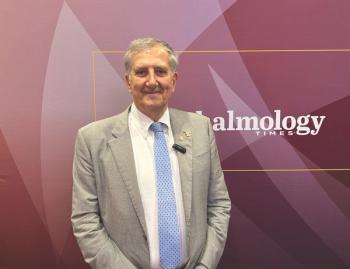
VEGF Trap-Eye: one year results
VEGF Trap-Eye, Regeneron's treatment for wet age-related macular degeneration (AMD), has demonstrated improved visual acuity (VA) and reduced biological markers of neovascular disease at one year of follow-up, according to final Phase II results presented at this year's Scientific Meeting of the Retina Society, held September 26–28 in Scottsdale, Arizona, US.
VEGF Trap-Eye, Regeneron's treatment for wet age-related macular degeneration (AMD), has demonstrated improved visual acuity (VA) and reduced biological markers of neovascular disease at one year of follow-up, according to final Phase II results presented at this year's Scientific Meeting of the Retina Society, held September 26–28 in Scottsdale, Arizona, US.
Study subjects (n=157) have been receiving the drug - initially on a fixed-dose and then on a PRN (as-needed) dosing schedule - for 52 weeks. The double-masked, prospective, randomized, multicentre Phase II extension study monitored safety, retinal thickness and vision gain. Subjects were separated into groups receiving doses of 0.5 mg at weeks 0, four, eight and 12 (Group A) and doses of 2.0 mg at weeks 0, four, eight and 12 (Group B). After week 12, patients received VEGF Trap-Eye on an as-needed (PRN) dosing schedule.
Patients in Group A achieved a mean VA improvement of 9.0 letters over baseline at one year; Group B, 5.4 letters. In Group A, the proportion of patients with ≥20/40 vision increased from 23% at baseline to 45% at one year; in Group B, this improvement was from 16% to 47%. During the 40-week PRN dosing period, patients in Group A received a mean of 1.6 additional injections; Group B required an extra 2.5 injections. Retinal thickness increase was 143 µm for Group A and 125 µm for Group B. These improvements were achieved mostly during the initial 12-week, fixed-dose portion of the trial, and were maintained throughout the 52 week period. In addition to this, the choroidal neovascular membrane (CNV) reduced by 3.41 mm and 1.42 mm at week 48 for Groups A and B, respectively. Although VEGF Trap-Eye was well tolerated, intravitreal injection-related complications were present, and a single incidence of culture-negative endophthalmitis/uveitis (unrelated to the drug) was reported.
The two ongoing Phase III trials of the VEGF Trap-Eye, initiated in August 2007, compare VEGF Trap-Eye with Lucentis (ranibizumab; Novartis). The trials are being conducted in the US, Canada, Europe, Asia Pacific, Japan and Latin America, and are currently
Newsletter
Get the essential updates shaping the future of pharma manufacturing and compliance—subscribe today to Pharmaceutical Technology and never miss a breakthrough.















































